Dragonflies are predators that eat all types of insects such as mosquitoes. In turn, they are also seen as prey by many other species of insects, arachnids, mammals, and bugs.
Dragonflies spend most of their lives next to water sources such as ponds. This means their predators are also animals or insects that live near water sources.
Birds are among the common predators seeking out insects near water. Mammals such as raccoons also seek out insects and bugs next to the water.
Ducks are some of the most common species that eat aquatic dragonfly nymphs and dragonfly eggs since they spend a lot of time in the water.
Table of Contents
What Eats Adult Dragonflies?
Both adult dragonflies and their eggs are eaten by a large group of predators. Adult dragonflies are mostly eaten by small birds.
It’s small birds that are fast enough to catch fast-flying dragonflies. Here are the most common species that eat these Odonata-genus insects.
1. Flycatchers
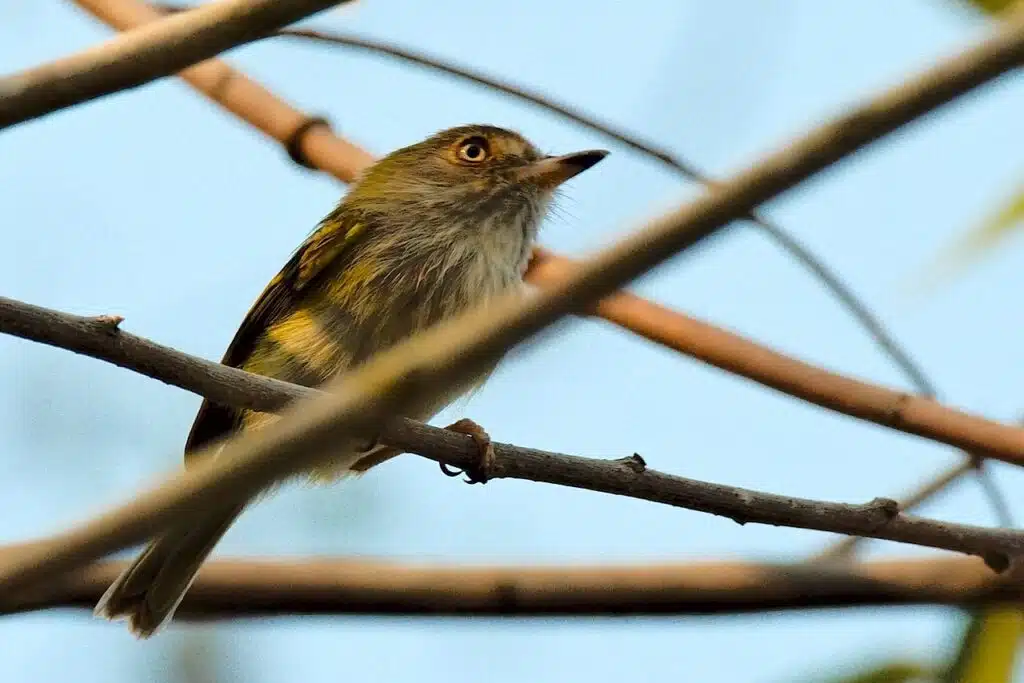
36 species of flycatchers are native to North America. Almost all of these small birds can catch and eat dragonflies.
Some of the most common species of flycatchers that eat these insects include kingbirds.
These small white and gray birds are known for being fast flyers. They catch dragonflies in the air.
Kingbirds and other types of flycatchers aren’t limited to dragonflies in their diet. They also eat other insects and spiders.
Flycatchers also eat various types of fruit.
2. Falcons
Falcons are some of the most powerful fast predators in North America. Merlins and American Kestrels are among the few species of falcons native to North America.
These birds are known for catching dragonflies on their own.
Most commonly, falcons steal dragonflies from smaller birds such as flycatchers.
Falcons are faster than flycatchers and they can quickly get away with their prey. Their strong claws even allow falcons to steal much larger prey from smaller predators.
Falcons might not be as good at rapid changes of flying direction as dragonflies, but they don’t need to be as they’re considerably faster.
Falcons can reach flying speeds of over 200 miles per hour. This is considerably faster than the fastest dragonflies which reach a flying speed of up to 35 miles per hour.
3. Nighthawks
Nighthawks are nocturnal hawks that exclusively eat insects. They eat any type of dragonfly they can find.
The highest chances for nighthawks to catch dragonflies are either late in the evening or early in the morning.
Nighthawks have very short feet which means they’re only truly capable of catching dragonflies in flight.
Nighthawks use their nocturnal hunting capacity to their advantage as they lack a high flying speed.
Unlike falcons, nighthawks have a flying speed of around 14-15 miles per hour, which can be even less than the flying speed of some dragonfly species.
As a result, most dragonflies caught by nighthawks fall prey at night.
4. Swallows
Swallows are among the most common birds that eat dragonflies.
These types of small birds are seen all around the world. They’re found in great numbers on islands, areas known for having all types of insects.
Swallows have adapted for fast flying which helps them catch insects in the air.
They have elongated bodies and sharp wing tips. The shape of the wings allows swallows to quickly change flying direction for better predatory efficiency.
Each species of swallows is different but most prefer larger dragonflies.
Swallows have a flying speed of at least 30 miles per hour. This makes them at least as fast as dragonflies, but generally faster.
5. Wasps

Wasps are sometimes seen eating smaller dragonflies. Most dragonflies cannot sting and flying is one of the few defensive techniques against predators.
Wasps are very good fliers and some of the stinging insects with the capacity of pointing out the softest area on the prey’s body to sting.
6. Raccoons
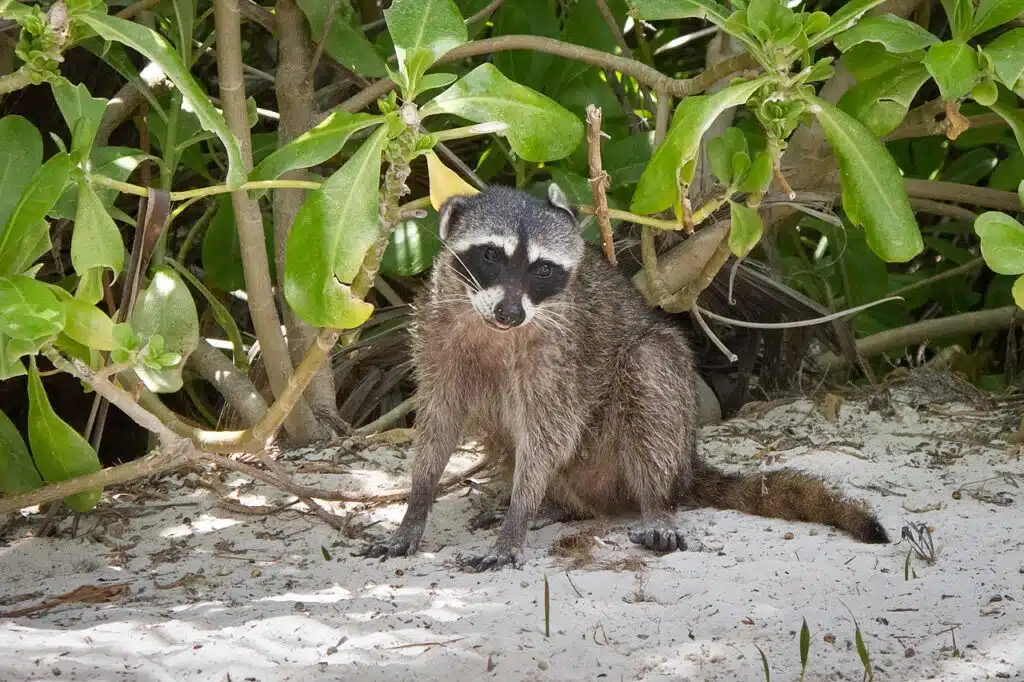
The diet of raccoons is based on insects and worms. They also eat fruit.
Raccoons are selective about the species of dragonflies that can eat. They might also stop chasing a fast dragonfly as they prefer insects that are easy to catch.
One of the main advantages raccoons have over other predators is their capacity to hunt during the day and the night.
Nighttime feeding is specific to this species with occasional daytime feeding. This means raccoons can catch dragonflies at any time of the day or night.
Raccoons aren’t too worried about an area not being rich in dragonflies as they only consume the insect during the summer months, in its flight season.
7. Sundew plants
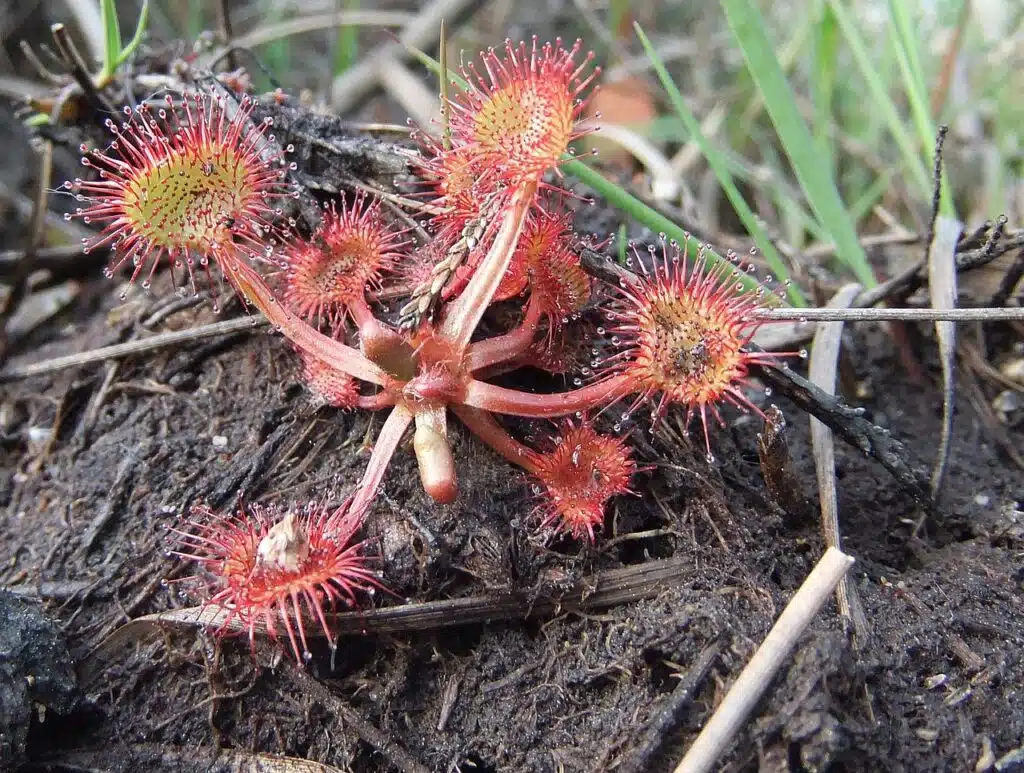
Sundew plants are carnivorous and they grow in moist areas. This makes them one of the unexpected predators of dragonflies.
This carnivorous plant has been extensively researched by Charles Darwin.
Sticky leaves are the main method this plant catches insects. It also has colorful flowers which attract insects.
Sundew plants eat a wide range of insects, some even larger than dragonflies. This plant can eat moths, butterflies, bees, and bugs.
These plants attract all types of dragonflies.
They have aromatic nectar that attracts insects. They then rely on adhesive substances to trap these insects.
Digestive enzymes across the plant are used to eat dragonflies once caught.
8. Praying mantis
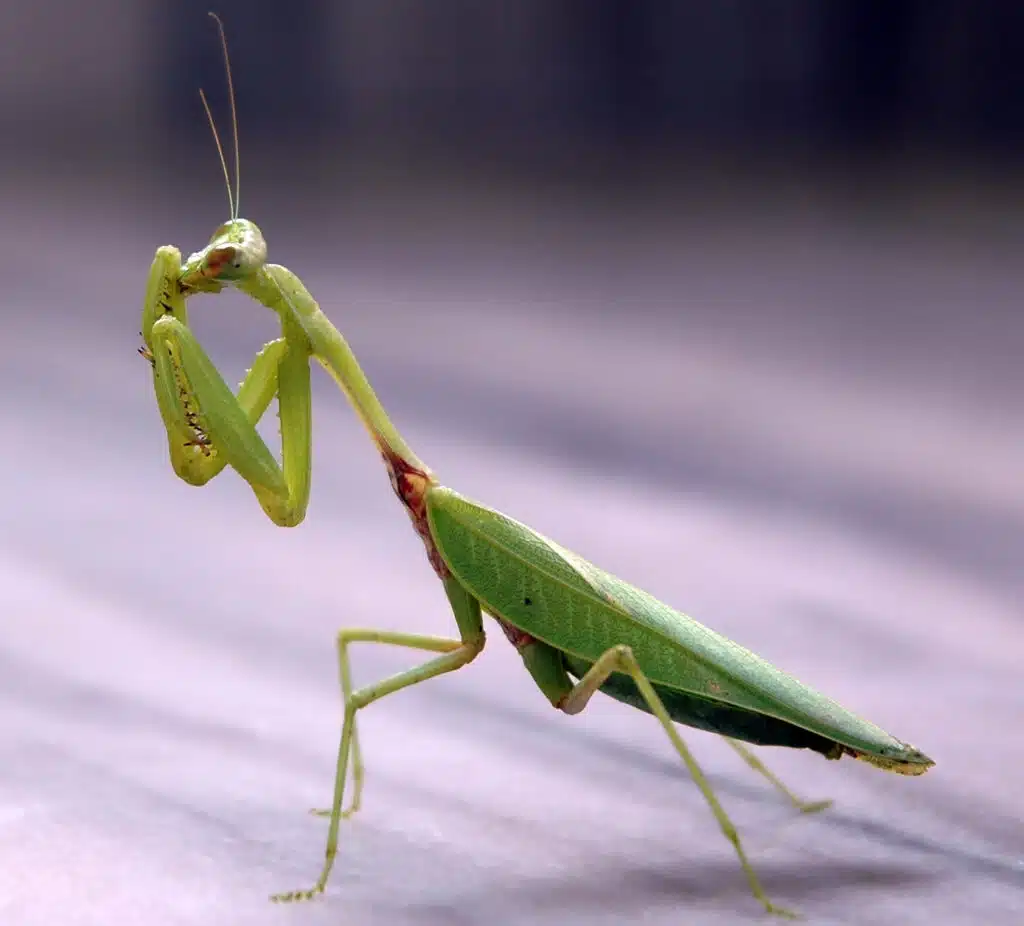
Praying mantises are among the few ambush dragonfly predators. These large insects can fly, but only over short distances.
Furthermore, Praying mantises to have very poor flying speed and agility compared to dragonflies.
They use camouflaging and ambush techniques to catch dragonflies.
You can find these large insects on vegetation around water sources. They might await dragonflies for hours or even a whole day.
What Eats Dragonfly Eggs, Larvae, and Nymphs
Dragonfly eggs lie in water. This means it has a different set of predators, as do the nymphs or young dragonflies.
1. Ducks
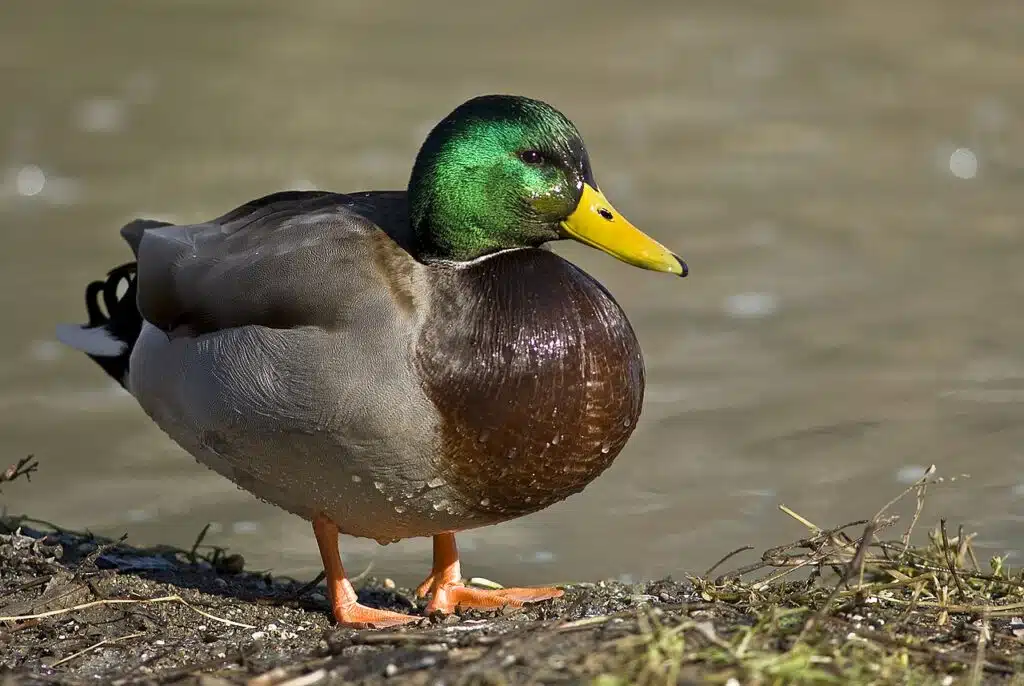
Many types of ducks eat young dragonflies, adult dragonflies, and dragonfly eggs.
Dragonflies lay eggs in still water, shallow water, or on vegetation near water or overhanging water.
Baby ducks are among the most common types of ducks that eat these eggs. You can find baby ducks on ponds and around streams.
Ducks eat both the eggs themselves and the vegetation eggs are laid on.
2. Fish
Fish in shallow water can eat dragonfly eggs. Fish are often eating dragonflies but they might also consider their eggs.
Artificial fish bait is always shaped like a fly and not fly eggs. But certain fish can eat dragonfly eggs regardless, especially if the eggs are easily accessible.
3. Salamanders
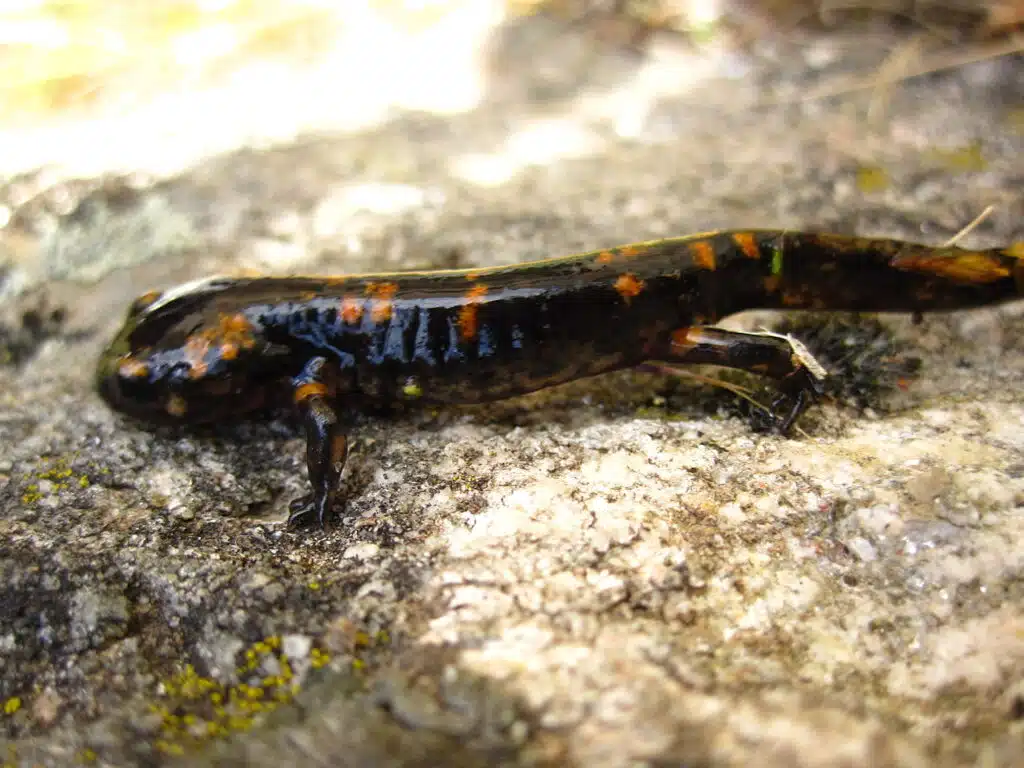
Newts and salamanders eat dragonfly nymphs.
Salamander spends much of its time in humidity-protected areas such as next to water sources. As a result, various species of salamander eat dragonfly eggs.
Salamanders are not as fast as dragonflies. They can reach maximum speeds of 15 miles per hour.
This means salamanders often rely on their camouflaging coloring and ambushing techniques to catch dragonflies.
4. Water Spiders
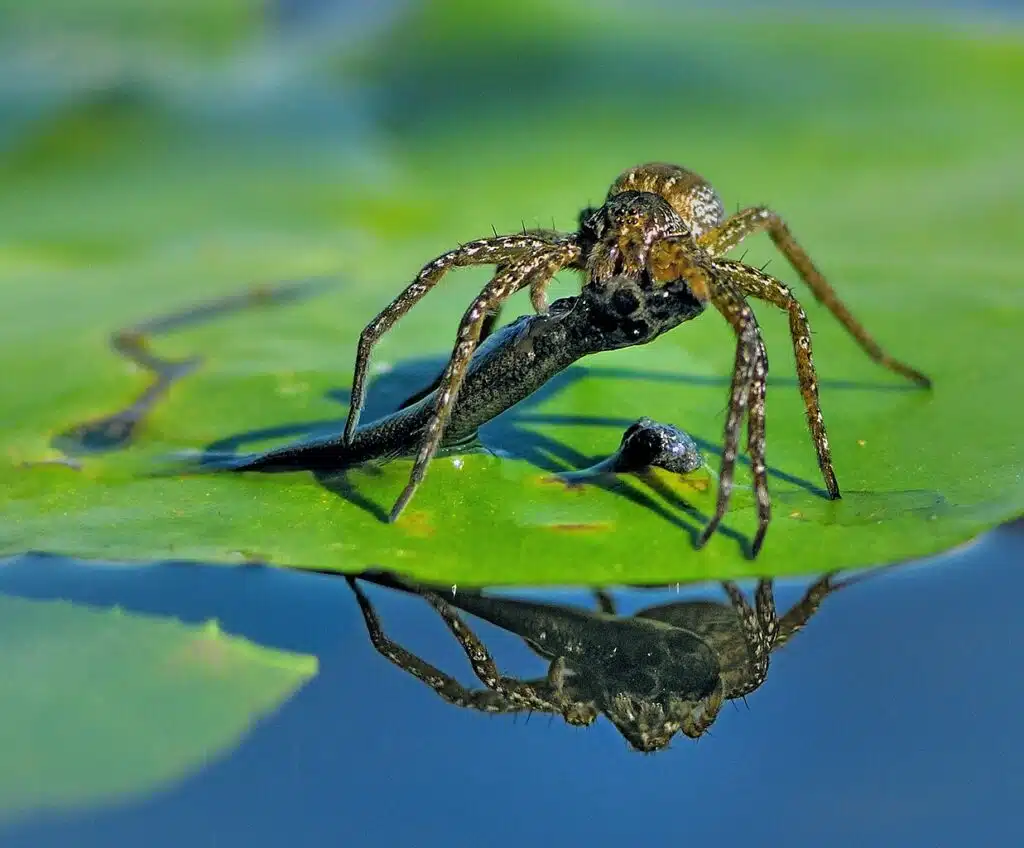
Water spiders can walk on water. These types of spiders can even eat small fish.
Since they are both aquatic and terrestrial, water spiders can easily find dragonfly eggs on vegetation in water or around water.
Water spiders themselves become a target for dragonflies when these insects reach adulthood.
How Do Dragonflies Defend Themselves?
Dragonflies cannot defend themselves with poison, stingers, or mimicry. These insects are often left with their innate flying abilities to keep them away from predators.
They fly fast
Dragonflies fly fast. There are some of the fastest insects in North America routinely reaching flying speeds of over 30 miles per hour.
This fast flying speed is what limits the number of predators that can keep up with these insects.
Only small birds and predatory species such as nighthawks can keep up with dragonflies.
They frequently change flight direction
Dragonflies have very long wings adapted to fast changes in flying direction.
Apart from flying speed, these insects also have flying agility. This means many species simply cannot predict the direction these flies will take and that cannot catch dragonflies.
Swallows are among the most common species that can change directions as fast or even faster than dragonflies. This means swallows are among the few flying dragonfly predators.
Dragonflies don’t have stingers
Dragonflies don’t have stingers to defend themselves. They have elongated ovipositors which may be confused with stingers.
Some dragonflies might attempt to bite people when handled but they cannot sting. As a result, dragonflies are truly left with flying speed and quick changes of direction as a means of defense.
Dragonflies don’t fly at night
Some predatory species go for dragonflies at night. This exposes the insects since only a small percentage of dragonflies are nocturnal.
Most species of dragonflies fly during the day or very early in the morning. But predators look for them both during the day and during the night.
Summary
Dragonflies are predatory species that eat all types of small insects.
Dragonflies are also eaten by a wide range of small birds, falcons, nighthawks, fish, and salamanders.
The life stages of dragonflies dictate which predators are more likely to catch the insects.
Adult dragonflies are most commonly eaten by birds while dragonfly eggs are eaten by salamander, frogs, fish, and water spiders.